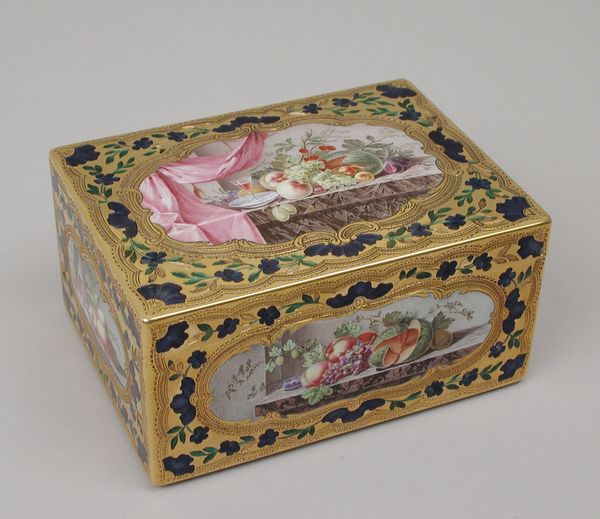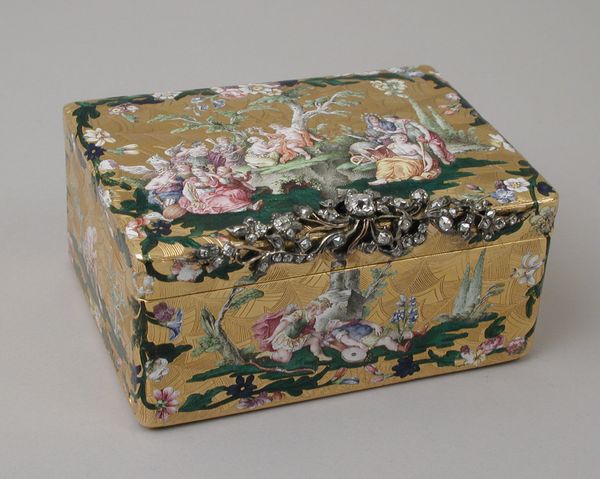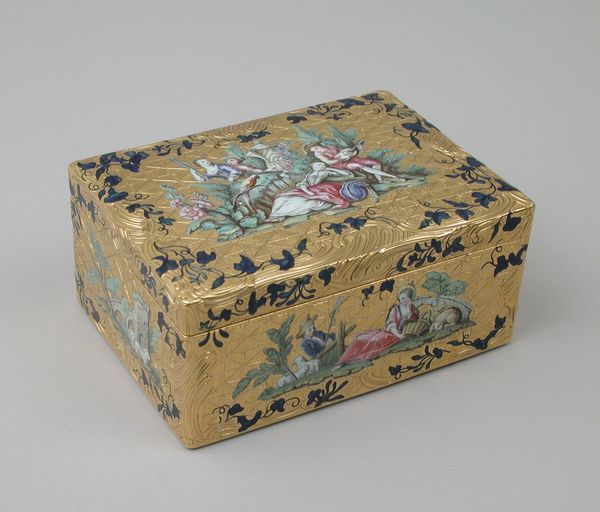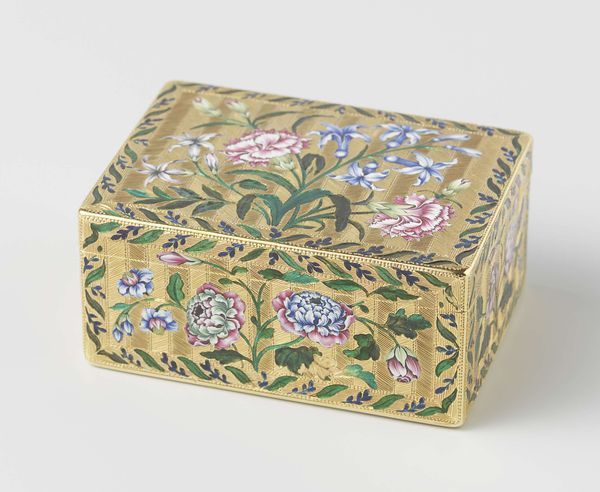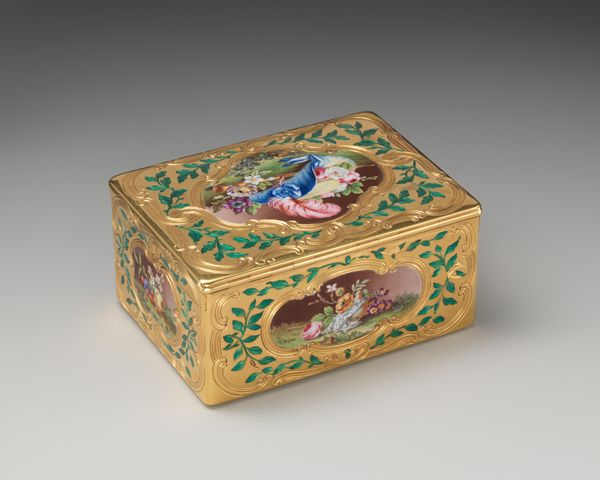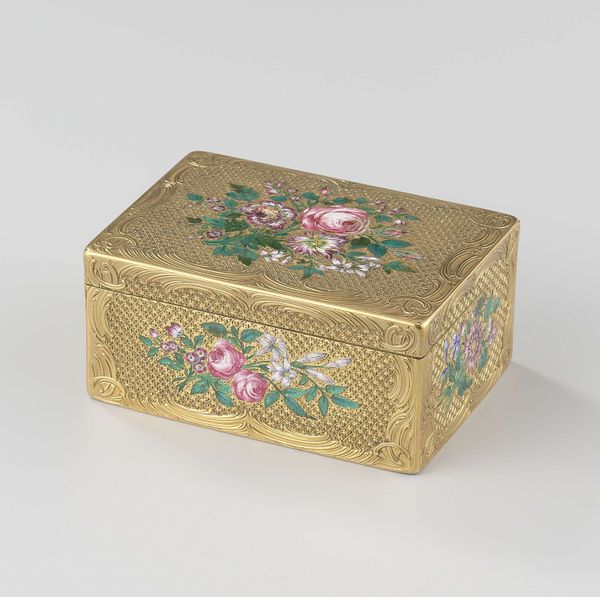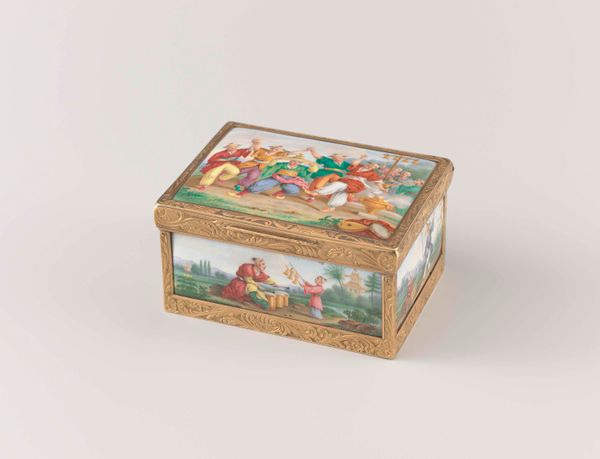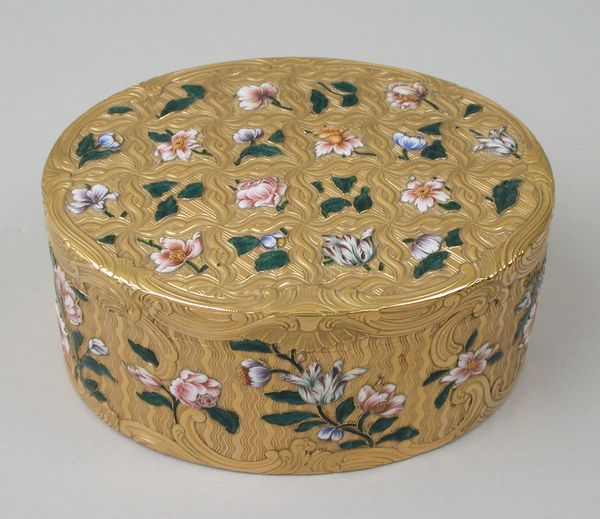
Snuffbox with scenes of children in pastoral settings 1752 - 1753
0:00
0:00
gouache, ceramic, sculpture
#
gouache
#
water colours
#
gouache
#
ceramic
#
flower
#
child
#
sculpture
#
ceramic
#
decorative-art
#
miniature
#
rococo
Dimensions: 3 1/4 × 2 1/2 in. (8.3 × 6.4 cm)
Copyright: Public Domain
Editor: This is a beautiful snuffbox from 1752-1753, likely crafted by Jean François Breton. It’s made with ceramic, gouache and watercolors, depicting scenes of children. What do you see in this piece that I might be missing? Curator: Let's consider this object beyond just aesthetics. We must consider how something like a ceramic snuffbox, adorned with gouache paintings of idealized pastoral scenes, operates within a specific economic and social framework. Notice the materials: ceramic, pigments... where did they originate? Editor: I hadn't thought about that. Probably not locally? Curator: Precisely. Its creation necessitates trade networks, skilled labor for both the ceramic base and the miniature paintings, and a consumer base wealthy enough to afford such a luxury. The "pastoral scenes" are not just charming; they're carefully constructed representations of leisure, completely divorced from the realities of the working classes producing both the raw materials and the object itself. The labour conditions are obscured in favor of presenting idyllic fantasy scenes. How might the mass consumption of decorative items impact artistic production? Editor: So, by focusing on the materials and how it was made, it makes me consider not just its beauty, but the system of labor and wealth that allowed it to exist. It adds layers of meaning that I never considered before. Curator: Exactly! Think of it this way, the act of "taking snuff" becomes a performance enabled by global flows of resources and exploited labor. Appreciating the snuffbox involves acknowledging its connection to those obscured processes of production and consumption. Editor: That really gives me a new way to see the artistry. It shows an interplay between the aesthetics and how the artwork was produced and sold in that era. Curator: Indeed. And understanding that interplay deepens our comprehension of art’s place in the world.
Comments
No comments
Be the first to comment and join the conversation on the ultimate creative platform.
